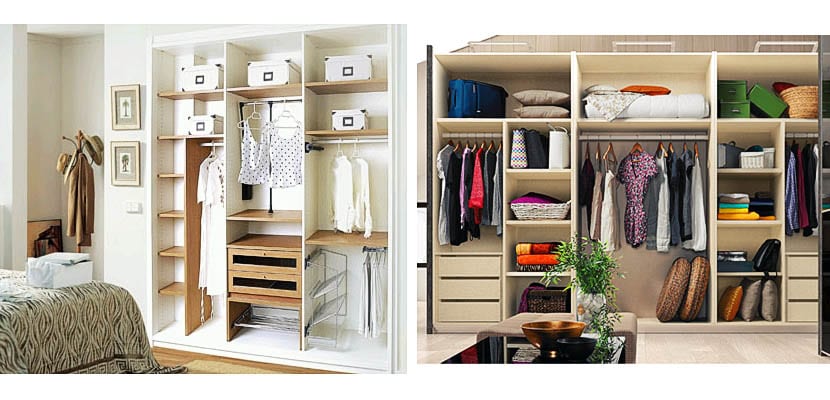
Keeping a closet tidy is much easier when there is a good distribution in it. The interior design of a closet It should not only be aimed at optimizing the space as much as possible, but it should also be adapted to the needs of those who are going to use it on a daily basis. Distributing your wardrobe correctly is the key.
There are some preliminary questions that we should all ask ourselves before getting down to work: How many people will use the closet? What do we need to organize clothes correctly? And above all: What kind of wardrobe do we have? Yes, they seem obvious questions, however, we hardly ever stop to think about their importance. The time has come to start doing it.
The interior spaces of our closet
Every wardrobe is organized in a series of vertical sections called bodies and other horizontal, upper or lower, such as shelves and drawers. Each of them has a different task. It is recommended that the vertical sections do not exceed one meter in width, in order to prevent the upper shelves from bending with the weight (the one that we place on them or the one that we hang from the bars where the hangers go).
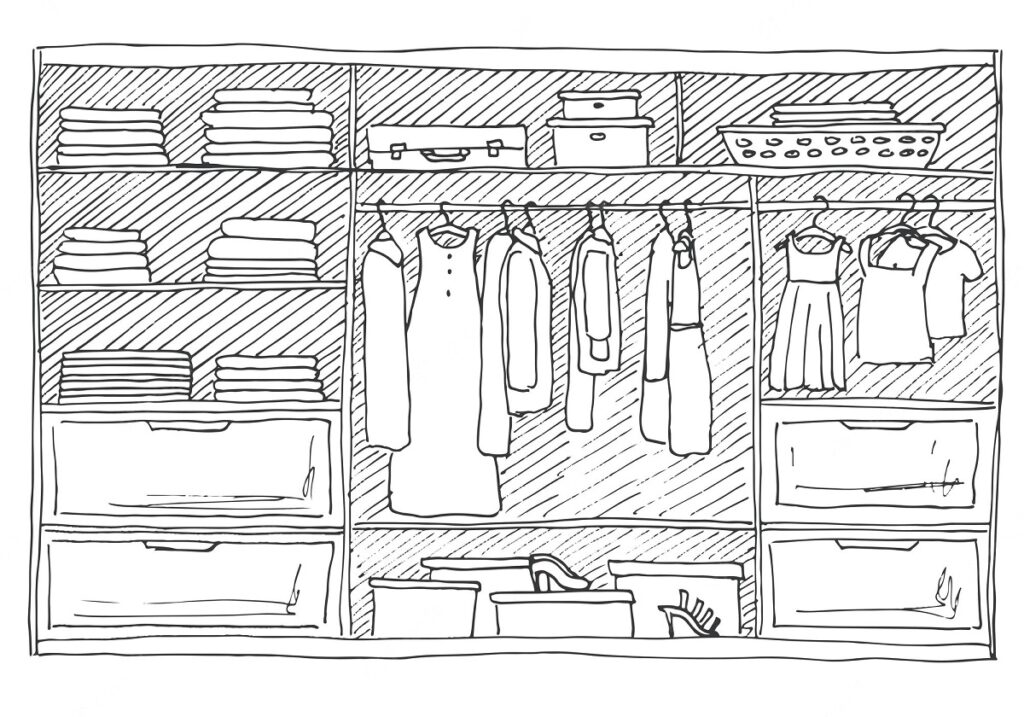
Depending on what type of garments we have, it is convenient to choose to give more or less space to vertical bodies. For example: if we have many long dresses and pants, we will need more vertical sections. If, on the other hand, what we have in abundance are shoes, we will have to give more space to the horizontal bodies in the lower part of the wardrobe, so that they all fit.
Today there are many firms that offer us a wide and varied selection of interior accessories to add to the predefined settings in order to adapt the wardrobe to our needs.
A good starting point to distribute our wardrobe correctly is to draw a small sketch of what the ideal distribution, always taking into account what are the garments and accessories that we want to store in it and the space limitations that we have. On this basis we can start designing our perfect wardrobe.
Available space and solutions
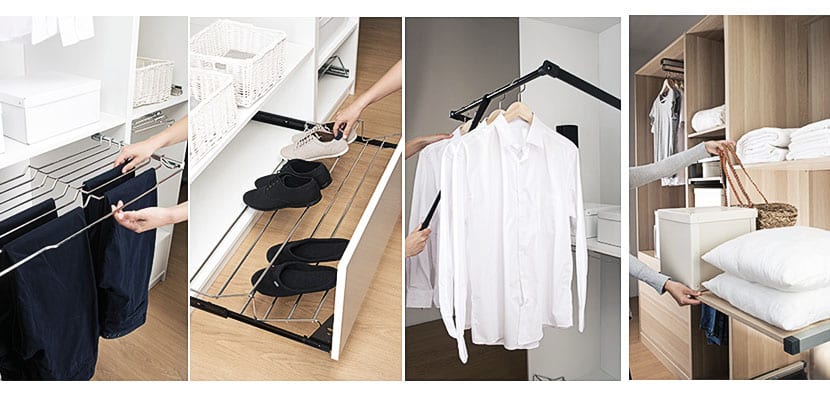
That old Darwinian sentence of "adapt to survive" can be applied to the world of closets. These aren't always what we want them to be, so the best we can do is take advantage of their quirks.
For example, if our closet is particularly deep, you have to take advantage of it to get the most out of it through removable bars and pantss, practical solutions that allow us to comfortably access all the clothes.
If, on the other hand, we have at home a cupboard too high, there is the option of resorting to solutions such as removable riser bars that allow us to access the clothes that our arm does not reach. As in the image above.
Folded clothes or hanging clothes
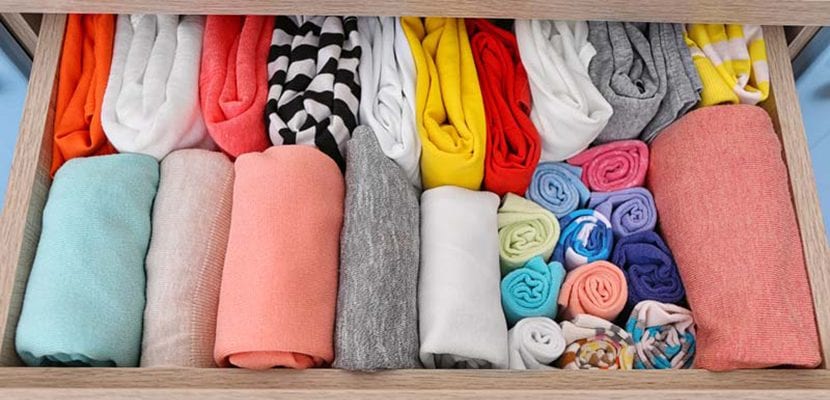
Here is another issue that will condition the entire distribution of our cabinets. If we choose the traditional method of hanging clothes on hangers, it will be necessary to leave a space between 120 and 170 cm high, to be able to hang longer garments, such as dresses. The bars can also be hung at lower heights (90 or 120 cm) to hang shirts and shorter garments.
On the other hand, more and more people have switched to Konmari method of the japanese Marie Kondo which, among other things, is committed to storing clothes folded in order to achieve more order in the closet and make better use of the available space. In this case we are going to need more shelves and with greater width.
Probably in the middle term is virtue. Our closet must have spaces for hanging clothes and for folded clothes. Dresses, shirts, polo shirts, jackets... These garments must be stored in hangers adequate so that they do not deform. And for skirts and pants you need clip hangers.
We will reserve the shelves for jerseys and t-shirts, while the drawers (classic or removable) are more suitable for socks and underwear, small garments that are easily dislodged and uneven, causing that visual disorder that annoys us so much and making us waste time. when we get dressed.
Interior light
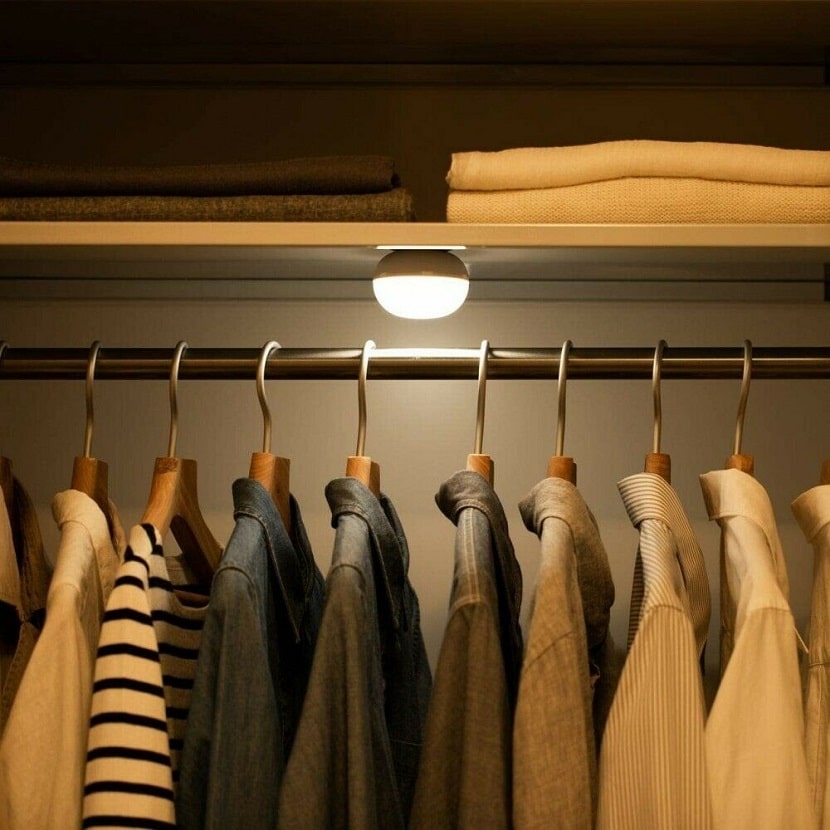
It is an upward trend, but also a very practical solution. If our closets are too closed and dark, why not add one or several points of light?
The hardest part of lighting the inside of a closet is decide where these lights will go. The options are the most varied. The classic idea is to place the lights in the highest part of the cabinet, the ceiling. From there, with correct orientation, we can get good lighting for all our clothes.
But there are also other more original alternatives: there are thoughtful light models that are inserted in the bars themselvesEither adhesive led strips to clocar on the sides of each body of the wardrobe, giving the interior space of the wardrobe a different intensity that can remind us of the changing rooms of some stores.
Closet doors
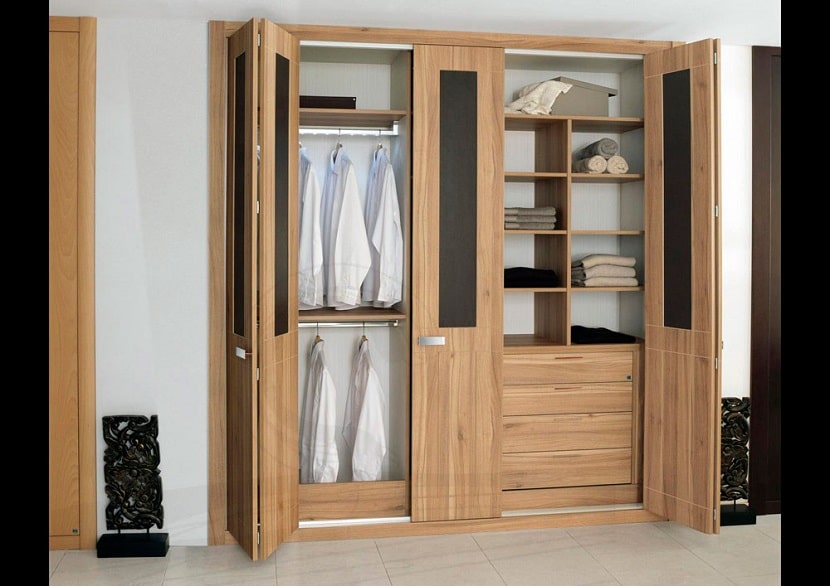
Although it may seem like a side issue at first, the door type that we choose for our closet can play for or against a correct distribution of space. There are three main types of wardrobe doors, each with its advantages and disadvantages in this regard:
- Sliding doors, that move along a very practical and simple rail system. Taking up little space, they are perfect for small rooms and, conveniently decorated, they can be one more element of home decoration.
- Folding doors, the classic doors that we open by stretching towards us. Although they can be somewhat more uncomfortable in rooms with limited space, they have a plus that is often overlooked: they provide us with extra storage space, since systems for hanging belts, scarves, etc. can be installed inside.
Other add-ons
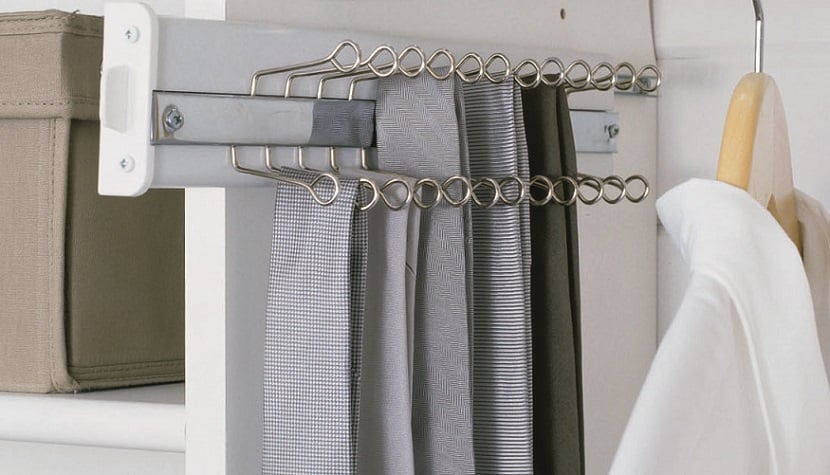
Finally, to complete the task of arranging a wardrobe intelligently and efficiently, we have innumerable accessories. These are some of the most interesting:
- Shoemakers. Specially designed to be integrated into a built-in wardrobe. There are many types, always destined to occupy the lower part of our cabinets. Some of them are closed so that bad odors from footwear (if any) are impregnated in our clothes.
- tie makers Essential in the wardrobe of every self-respecting gentleman. These accessories are hung on the bars or attached to the walls of the closet. They can store a large number of ties, properly classified in a very small space. There are also interesting removable models, like the one in the image above.
- pants. They are a special type of hangers designed to house several pants, making the most of the available space and keeping our pants smooth and wrinkle-free.
En Saiton, Filinox, Ikea, Esenzia, In Decor and Esmueble you will find some of the solutions mentioned in this article. Use them as inspiration to design your wardrobe.